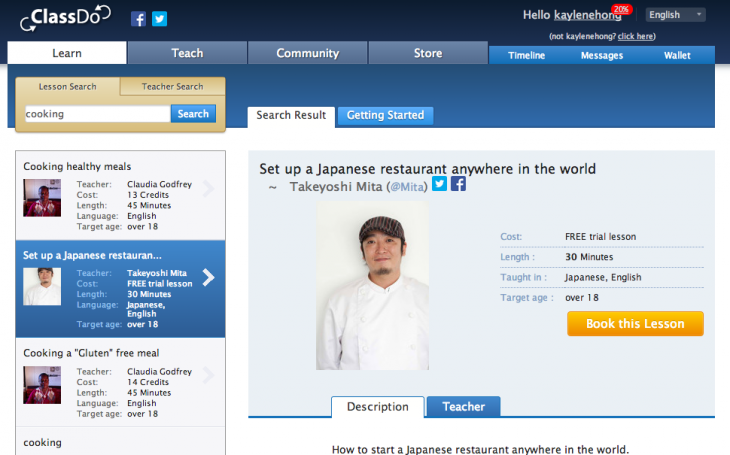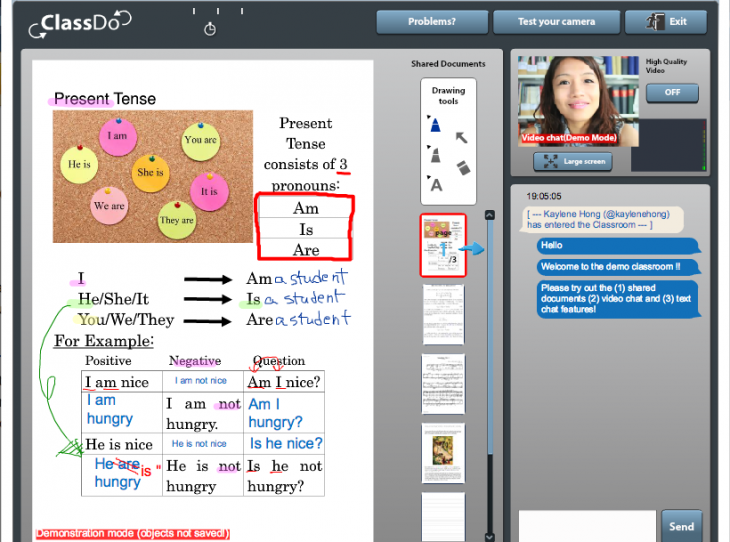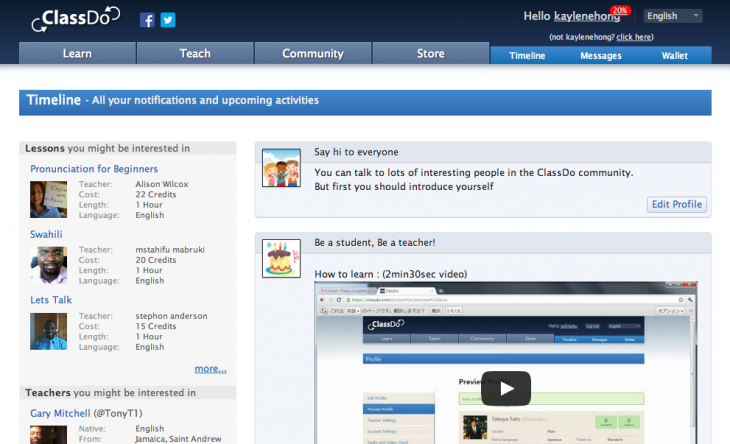
Late last year, Google launched Helpouts, which brought the idea of allowing people to receive instant help through live video feeds into the limelight. But the concept behind Helpouts has existed for some time, with one startup quietly building up a business based on the same premise since 2010.
ClassDo is a Tokyo-based online education startup that connects people via one-on-one lessons conducted through live video. It operates in 90 countries where users can list their knowledge online and have students sign up for their classes. What’s interesting is that the service isn’t limited to countries with fast internet connections — it has users in emerging markets too.
Chiew Farn Chung, the CEO of ClassDo, told TNW in a recent interview:
What’s strong about ClassDo is that it’s not just Korea, Japan and the places that support really fast video connections. We’re supporting places like Kenya. We were surprised actually — we launched for about a year and our 40th country was Argentina though we didn’t have a Spanish version yet, so how the heck did they know about this — and slowly we get these African users too.
He points out to cater to such emerging markets, the company has had to focus on compression technology to make its service reliable even over slow internet connections.
Google Helpouts may have an easier life standing out simply because it is operated by a high-profile company and connected to Google+, but Chiew noted that Google doesn’t appear to be investing significant resources into the service. In particular, each transaction on Google Helpouts can only be paid for through Google Wallet, with no other payment service provided — but Google Wallet only supports merchant registrations in around 50 countries.
“Either they have payment systems in all the countries, or they’re screwed,” Chiew noted.
On the other hand, ClassDo works with a wide span of payment enablers that have reach across the world. Another one of its unique features is that it doesn’t need you to consider the exchange rate for each and every transaction — instead the price of the classes are listed in credits which you purchase in your own currency.
The class can be arranged via a drag-and-pull calendar system which is already adjusted for timezones. On ClassDo, there’s also a lot more than just live video lessons. The class takes place on a platform where sharing documents is synced (and you can draw or highlight on the documents) so there can be live feedback, which is particularly useful for art or mathematics lessons, for example.
To encourage users to sign up, many of ClassDo’s teachers provide a free trial lesson — and as the classes are pay-per-use, there is not much risk as it doesn’t tie you down long-term. If several students leave negative feedback for a particular teacher, he/she won’t appear in ClassDo’s search list anymore. In a case where the teacher does something really bad, ClassDo can also ban him/her, and it will be difficult to recreate another account or make a comeback, because ClassDo knows the bank account and can
In terms of user interface, ClassDo doesn’t look as sleek as Google Helpouts — and to be honest, it would probably be easy for Google to step up its efforts to include document syncing and integrate other payment options, and it may just eventually appeal more to users than ClassDo.
However, what probably helps ClassDo stand its ground is how it has already done a lot of compression efforts to appeal to emerging markets with slower internet connections, and already has reach into these places, so it is well on its way to become a truly global marketplace for online lessons. Google may also just be doing ClassDo a favour by helping to create awareness and demand for these services.
“On Amazon, you can buy anything. On ClassDo you can basically just learn anything you want,” Chiew said.
Headline image via YASUYOSHI CHIBA/AFP/Getty Images
Get the TNW newsletter
Get the most important tech news in your inbox each week.







